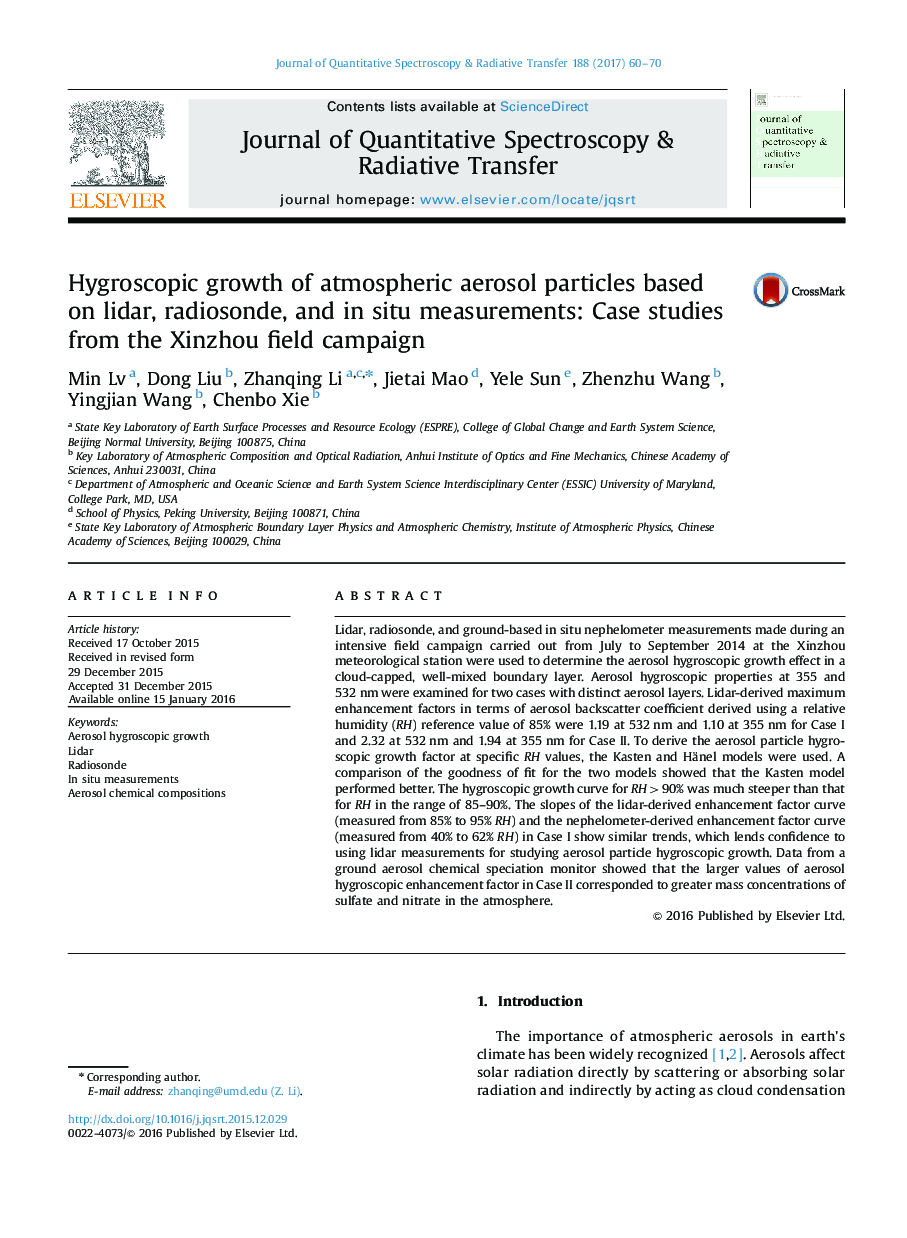| کد مقاله | کد نشریه | سال انتشار | مقاله انگلیسی | نسخه تمام متن |
|---|---|---|---|---|
| 5427281 | 1508627 | 2017 | 11 صفحه PDF | دانلود رایگان |

- A novel study of aerosol hygroscopic growth with physical and chemical data in China.
- Aerosol hygroscopic properties at 355 and 532Â nm were derived from Raman lidar alone.
- The lidar-based results were compared with in situ measurements.
- Aerosol hygroscopicity was explained with aerosol chemical composition data.
Lidar, radiosonde, and ground-based in situ nephelometer measurements made during an intensive field campaign carried out from July to September 2014 at the Xinzhou meteorological station were used to determine the aerosol hygroscopic growth effect in a cloud-capped, well-mixed boundary layer. Aerosol hygroscopic properties at 355 and 532Â nm were examined for two cases with distinct aerosol layers. Lidar-derived maximum enhancement factors in terms of aerosol backscatter coefficient derived using a relative humidity (RH) reference value of 85% were 1.19 at 532Â nm and 1.10 at 355Â nm for Case I and 2.32 at 532Â nm and 1.94 at 355Â nm for Case II. To derive the aerosol particle hygroscopic growth factor at specific RH values, the Kasten and Hänel models were used. A comparison of the goodness of fit for the two models showed that the Kasten model performed better. The hygroscopic growth curve for RH>90% was much steeper than that for RH in the range of 85-90%. The slopes of the lidar-derived enhancement factor curve (measured from 85% to 95% RH) and the nephelometer-derived enhancement factor curve (measured from 40% to 62% RH) in Case I show similar trends, which lends confidence to using lidar measurements for studying aerosol particle hygroscopic growth. Data from a ground aerosol chemical speciation monitor showed that the larger values of aerosol hygroscopic enhancement factor in Case II corresponded to greater mass concentrations of sulfate and nitrate in the atmosphere.
Journal: Journal of Quantitative Spectroscopy and Radiative Transfer - Volume 188, February 2017, Pages 60-70